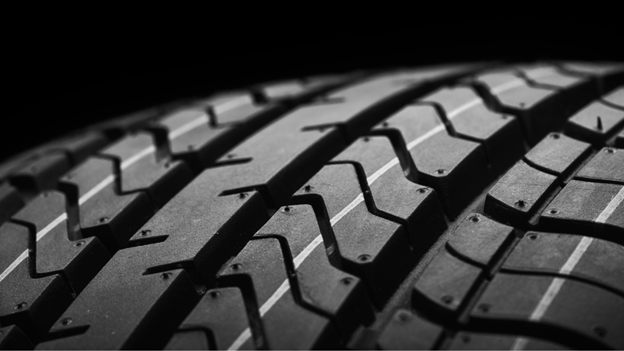Tires are one of the most important components of your 4×4, providing the necessary grip and stability for both on-road and off-road driving. However, uneven tire wear can compromise handling, reduce fuel efficiency, and shorten the lifespan of your tires. Identifying the causes of uneven tire wear early can save you from expensive repairs and replacements down the road. Below are six common causes of uneven tire wear and how to prevent them.
1. Improper Tire Pressure
One of the most common reasons for uneven tire wear is incorrect tire pressure. Overinflated tires cause excessive wear in the center of the tread, while underinflated tires wear more along the edges. Both scenarios reduce traction, affect handling, and increase the risk of a blowout.
How to Prevent It:
- Check your tire pressure regularly (at least once a month) using a reliable gauge.
- Inflate your tires to the manufacturer’s recommended PSI, which is usually listed in the owner’s manual or on the driver’s side door frame.
- Adjust tire pressure based on driving conditions—lower it for off-roading to improve grip and increase it for highway driving to enhance fuel efficiency.
2. Misaligned Wheels
Wheel alignment ensures that your tires make proper contact with the road surface. If your wheels are misaligned, one or more tires may experience excessive wear on the inner or outer edges, leading to premature replacement. Misalignment often occurs after hitting potholes, curbs, or driving on rough terrain.
How to Prevent It:
- Have your wheel alignment checked and adjusted regularly, especially if you frequently drive on rough trails.
- Look for signs of misalignment, such as the vehicle pulling to one side or a crooked steering wheel when driving straight.
- If you install a lift kit or suspension upgrades, get a professional alignment to ensure proper handling and even tire wear.
3. Worn or Faulty Suspension Components
A vehicle’s suspension system plays a crucial role in maintaining even tire contact with the road. Worn-out shocks, struts, or bushings can cause excessive bouncing, leading to patchy or scalloped tire wear. Off-road driving puts additional strain on suspension components, accelerating wear and tear.
How to Prevent It:
- Inspect your suspension system regularly for signs of damage, such as leaking shocks, excessive bouncing, or clunking noises.
- Replace worn-out suspension parts promptly to maintain proper tire contact with the road.
- If you notice uneven wear or a rough ride, search for 4wd suspension near me to find a specialist who can diagnose and fix the issue.
4. Unbalanced Tires
Tire balancing ensures that weight is evenly distributed around each wheel. When tires are unbalanced, they can cause vibrations at certain speeds, leading to irregular wear patterns such as cupping or scalloping. This issue is more common in off-road vehicles that frequently tackle rocky or uneven terrain.
How to Prevent It:
- Have your tires balanced every 5,000–7,500 miles or whenever you install new tires.
- If you feel vibrations in the steering wheel or seat at certain speeds, get your tires checked for balance.
- If you rotate your tires, make sure they are rebalanced afterward to prevent uneven wear.
5. Lack of Regular Tire Rotations
Front and rear tires wear at different rates due to variations in weight distribution and driving habits. In 4×4 vehicles, front tires often wear out faster because they handle more of the braking and steering forces. Without regular rotations, some tires will wear down more quickly than others, leading to uneven tread wear.
How to Prevent It:
- Rotate your tires every 5,000–7,500 miles or as recommended by your vehicle’s manufacturer.
- Follow a proper rotation pattern (such as front-to-back or cross-pattern rotation) to ensure even tread wear.
- If you have larger off-road tires, make sure your spare is also rotated in to maximize longevity.
6. Aggressive Driving and Hard Braking
Frequent hard braking, sharp turns, and aggressive acceleration can contribute to uneven tire wear. This type of driving puts extra strain on the tread, especially on the edges of the front tires. While off-roading requires precise maneuvering, excessive wheel spin and sudden stops can accelerate tread wear unevenly.
How to Prevent It:
- Drive smoothly and avoid slamming on the brakes whenever possible.
- Maintain a safe following distance to reduce the need for sudden stops.
- When off-roading, use controlled throttle inputs and avoid excessive wheel spin to minimize tire damage.
Uneven tire wear is often a sign of underlying issues that can affect the overall performance and safety of your 4×4. By maintaining proper tire pressure, getting regular wheel alignments, inspecting your suspension, balancing your tires, rotating them on schedule, and adopting smoother driving habits, you can extend the lifespan of your tires and ensure a better driving experience.
If you notice uneven wear or handling issues, consulting a 4wd suspension expert can help diagnose and fix suspension-related problems before they lead to more extensive repairs. Taking proactive steps to maintain your tires will save you money in the long run while keeping your 4×4 ready for any adventure.

